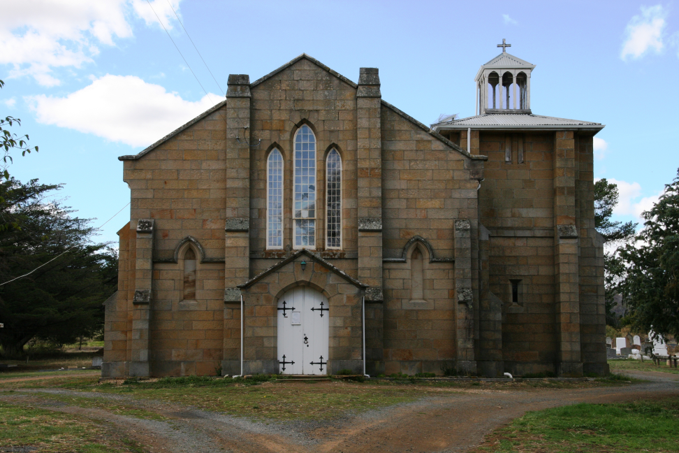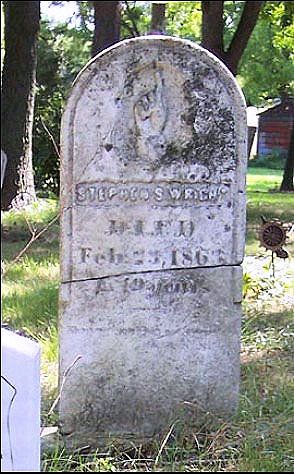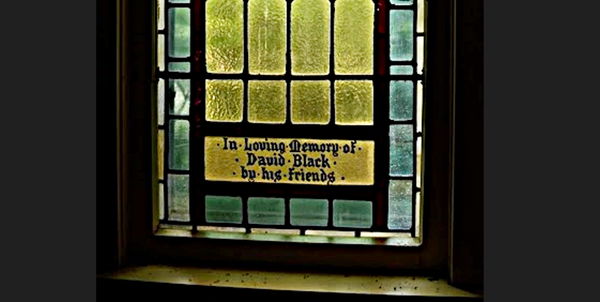Remembrances of Rebellion: The Odyssey of Stephen S. Wright
by: John C. Carter
Introduction:
It was all the result of rebellious acts. Between December 1837 and December 1838, at least 14 armed incursions from the United States into Upper Canada occurred. These misguided efforts to overthrow the British government, and to resolve what in some quarters was regarded as “oppression and tyranny,” were all spectacular failures. As a consequence, over one thousand individuals were arrested for piratical invasion and treason.
Many came from northern New York counties. Stephen Wright’s journey into servitude began with his capture at the Battle of the Windmill at Prescott, Upper Canada, in November 1838. The 25-year-old was the only resident from Lewis County, NY, to be captured, charged, convicted, and transported to Van Diemen’s Land.
Active recruitment by the clandestine organization called The Patriot Hunters had begun in spring 1838. After the defeat of rebel forces at the Battle of the Windmill, 148 men were taken prisoner. Having committed “armed hostility” against Upper Canada, all were liable for prosecution under “An Act to Protect the Inhabitants of this Province Against Lawless Aggression from Subjects of Foreign Countries at Peace with Her Majesty.”
Upper Canadian Lieutenant-Governor Sir George Arthur issued a General Order directing a court martial be held at Kingston. The Prescott prisoners were sent there and incarcerated at Fort Henry. After trials and several executions, these prisoners were joined by Patriot colleagues taken at the St. Clair Raids and the Battle of Windsor. Tyrannus Augustus Wright, of Pickney, NY, visited his son in Fort Henry on December 17, 1838. The record of this visit was published in various New York and Upper Canadian newspapers in mid-January 1839.

To Van Diemen’s Land:
In some period narratives, it appeared uncertain as to what the fate of these men would be. It was, however, made patently clear in a letter written to his family by Battle of Windsor prisoner Elizur Stevens. He wrote: “Our prospects have been very flattering until within a few days, but now they seem to wear a more unfavourable aspect, we are all most sure of being transported to Van Diemen’s Land.” On September 23, a government directive came to prepare for departure from Kingston. Eighty-three prisoners, including Stephen Wright, were placed on Durham boats and taken to Quebec. In a letter written to his parents from Quebec on September 27, Wright noted what he believed to be his final destination: “We are to go on board the Ship Buffalo this evening for New South Wales.” However, the prisoners were loaded on board and ultimately transported to Van Diemen’s Land (now the Australian state of Tasmania). This journey lasted 137 days and covered over 16,000 miles.

Into the Penal System:
The Buffalo anchored in Hobart Town on February 12, 1840. Early in the morning of February 15, the Patriot exiles were put on a barge and in two row boats and taken ashore at the New Wharf. Here, they were documented and given a number by government officials. Stephen Wright’s was #2653. On receiving specific instructions from Lieutenant-Governor Sir John Franklin, the Patriots by-passed the usual disposition of criminals and were not sent to the Hobart Prisoners’ Barracks. Instead, they were marched directly to a probation station on the outskirts of Hobart Town, near Sandy Bay.
Wright wrote of this experience and said that he and his fellow prisoners had been “. . . placed in a yard as if we had been cattle.” He added that the Patriots slept in huts made of slabs that were poorly thatched and open to wind, sleet, and snow storms. Prisoners were harnessed four men to a cart to move stone. They drew loads of 15 – 18 hundredweight from a quarry, one mile over broken ground, to their work site.
In correspondence to the British Government dated February 15, 1840, Lieutenant-Governor Franklin decreed that these political prisoners would “. . . be placed on the roads by themselves and landed direct at the place selected under a superintendent of experience and selected overseers.” This directive was carried out, and the men remained at this site, building a nine-mile stretch of road between Sandy Bay and Brown’s River.
On June 9, prisoners Horace Cooley, Jacob Paddock, Michael Morin, and William Reynolds escaped. They were soon recaptured and sent to the Port Arthur Penal Settlement as second offenders. To forestall further attempts to abscond, Franklin ordered the rest of the men in the work party to be moved inland to the Lovely Banks Probation Station.
Situated in the Midlands, 36 miles north of Hobart Town, Lovely Banks had been established in 1839. It was part of the government’s plan for constructing a main road north to Launceston. William Gates, who had been captured at the Battle of Windsor, described the daily routine: “Our loaded carts we had to draw two miles five times a day. At early dawn we were roused, and away at our tasks by sunrise, which were not allowed to quit till sundown, when we were marched back in double file, and by the time we had our pint of skilly, it would be long after dark, when, to cap our enjoyments, we would be forced to the huts and locked in, where was no fire or light, nor any convenience whatever: cold, shivering, hungry and generally wet to the skin with the chilly rains that fall almost daily.”[2]
Stephen Wright would have experienced similar conditions. The Patriots toiled at Lovely Banks, until colleagues Linus Miller and Joseph Stewart bolted on August 29, 1840. Lieutenant-Governor Franklin was so incensed about this escape that he ordered the remaining men to be dressed in “magpie,” the standard convict garb.
The Patriot prisoners were then sent to the Green Ponds Probation Station. This small but thriving midlands coach stop (now Kempton, north of Hobart), had been established as a road station as early as 1830. Here, the Patriot exiles continued with road and drainage work, but were also involved in the construction of St. Mary’s Anglican Church. They stayed at Green Ponds until May 1841.

Subsequently, they were transferred to the Bridgewater Probation Station, eleven miles north of Hobart Town. Here, they joined 300 – 400 British felons who were involved in the construction of a causeway and punt across the Derwent River. The work of the exiles consisted of carting and wheelbarrowing stone to build these engineering projects. Wright commented on his time spent at Bridgewater: “Some of the darkest days of my captivity, were the 16 that I had to pass among such a vast number of the offscourings of creation – the dregs of the vilest of the vile.”
Soon after their arrival, Lieutenant-Governor Franklin ordered that the large Patriot group be divided into smaller parties of 10 – 12 men and then be distributed to other probation stations throughout the colony. Dispersal took place on May 29, 1841. Prisoners were sent to New Town Bay, Jericho, Jerusalem, Brown’s River, Saltwater River, Mount Dromedary, Constitution Hill, Rocky Hills, Seven Mile Creek, Victoria Valley, and Marlborough. At these locations, they continued to carry out road work and assist in the construction of new probation stations.
Stephen Wright was posted to Brown’s River. There, he received 21 days solitary confinement for not divulging from where he had received tobacco. Lieutenant-Governor Franklin visited the site and promised tickets of leave would be issued shortly. According to Wright, the probation station’s superintendent suggested that he and his Patriot comrades “ . . . were the best men to work, and the best behaved on the station.” Wright was injured while working at Brown’s River, and while in hospital, he was appointed as an attendant for a 4-month period.


Tickets of Leave:
Lieutenant-Governor Franklin was empowered to grant tickets of leave (a form of probation) to prisoners after two years of hard labour on the roads, if their conduct merited such action. Stephen Wright was one of 70 North American political prisoners to receive this indulgence on February 10, 1842. Government Notice #47, announcing this information, was first published in the February 11 edition of the [Hobart Town] Courier. The tickets of leave were issued on the condition that the Patriot prisoners resided only in the districts of Fingal, Campbell Town, Oatlands, Bothwell, Hamilton, and Swanport.
By March 1842, Stephen Wright was located in the Midlands town of Bothwell. He was first employed as a wheelwright, then went to work for the local Assistant Police Magistrate, Samuel Barrow. After three months employment with Barrow, Wright moved on to Campbell Town. There, he joined an “association of mechanics” set up by his fellow Patriots. He was also involved in establishing a “little temperance society.” Ticket of leave men were forbidden to be on the street after 8 p.m. Wright was once caught breaking this rule, had his head shaved, and was put in solitary confinement for seven days. On another occasion, he received the same punishment for refusing to carry a bar of iron, weighing 100 pounds, to the probation station.
Another option available to ticket of leave men was that they could be conscripted by the government to help in the capture of bush-rangers (escaped outlaws living in the bush). In June 1843, Wright and fellow Patriot exile Aaron Dresser Jr., along with three English felons, were involved in the chase and capture of notorious bush-rangers Jeffs and Conway. [3] As reward for their involvement, each prisoner who participated in this successful capture received the sum of 33 pounds, 6 shillings, 8 pence, and a free pardon. Government Notice #153, issued on June 2, confirmed Lieutenant-Governor Sir John Franklin’s approval of these rewards. Wright received his free pardon on June 23. His testimony, given at the July 3 sitting of the Supreme Court at Launceston, helped to convict these desperados.
The Final Chapter:
In addition to the pardon and reward, the Franklin administration also provided free passage to England aboard the British brigantine Areta. On reaching London, the American Minister in England, Edward Everett, arranged travel for Wright and Dresser back to New York City on the Quebec. Soon after their arrival, the Tribune published a letter to the editor written by the two men, which chronicled their recent experiences as convict exiles. While in New York City, the two returnees met with banished Upper Canadian rebel leader, William Lyon Mackenzie.
Stephen Wright then returned to Denmark, Lewis County, NY. On his arrival, he was received by his aged father as the long-lost prodigal son. In addition, crowds of local people and friends also welcomed him home. There, author Caleb Lyon took an interest in Wright’s story. Working with Wright, within four months of his return, they produced a narrative; the book was officially launched in New York City on May 8, 1844. [4]
Like most of the Patriots who returned from Van Diemen’s Land, Stephen Wright lived out the rest of his life in relative obscurity. He married Laura P. Gates, of Champion, Jefferson County, NY. [5] Census records for August 10, 1850, show that the couple and Wright’s father-in-law, Isaac Gates, were living in New Windsor, VT. They were listed as “Free Inhabitants,” with Wright being described as a carpenter, and Gates as a mason. The value of the real estate Wright owned totaled $300.

Stephen S. Wright died on February 23, 1863, in Concord, MI. Cemetery records suggest that he was likely visiting his wife’s sister, Mary Wade, at the time. It is also believed that Wright was probably in touch with Orlin Fitzgerald Gammell, the son of Wright’s fellow Patriot, James Gammell. The younger Gammell was living in his grandparents house, in nearby Spring Arbor, MI. Wright and the elder Gammell had been close friends during their incarceration in Van Diemen’s Land. [6]
His odyssey had ended, but the story of Stephen S. Wright can be considered an important component in the history of the Patriot War/1838 Upper Canadian Rebellion. It has connective links to the histories of Ontario, Tasmania, and the American states of NY, VT, and MI. The story of Stephen S. Wright personalized the saga of an individual caught up in these events, which could have been easily overlooked and forgotten forever over time. It has helped us to better understand events during those troubled times.
Footnotes:
[1] Benjamin Mott was transported on the Buffalo, but did not disembark at Hobart Town with the other 92 English speaking Patriots, who had been captured in Upper Canada. He was sent to Sydney with the French speaking Patriotes, but subsequently, at his request, Mott was transferred to Van Diemen’s in February 1844. He served out the rest of his sentence with the English speaking Patriots, until receiving his pardon.
[2] Skilly - / (ˈskɪlɪ) / noun. mainly British a thin soup or gruel.
[3] Dresser was originally from Alexandria, Jefferson County, and returned there after his pardon. In 1846, he purchased land in Theresa, Lewis County for $100. The 1850 Lewis County Census listed Dresser as a Theresa resident and carpenter, living there with his wife Elizabeth and three children.
[4] For period reviews of this narrative, see the Brooklyn Eagle, and The New York Herald, both published on May 8, 1844.
[5] Laura P. Wright (née Gates) was originally from Champion, Jefferson County, NY. Her death certificate indicates that she died a widow in Cedar Rapids, Iowa, on March 11, 1909.
[6] James Gammell (Gemmell) was captured at the Short Hills incursion. He was one of the few transported Patriots to successfully escape from Van Diemen’s Land, probably aboard an American whaling ship. On his return, he wrote a rather sensationalized, two piece article for the [New York] Plebian, which detailed his and his comrades experiences while in captivity. This expose was re-printed in many period newspapers in Canada, England, and United States. Gammell eventually moved westward, and assisted Brigham Young in establishing the Mormon Church in Utah.
Bibliography & Suggested Reading:
- John C. Carter, “North American Political Prisoners in Van Diemen’s Land: Working in the Midlands,” The York Pioneer (2012), v. 107.
- Caleb Lyon (ed.), Narrative and Recollections of Van Dieman’s Land (New York: J. Winchester, 1844).
- James Gammell, “Two Years in Van Diemen’s Land,” The [New York] Plebian (June 25 & July 1, 1842).
- Elizabeth Gammell Hedquist. Escape From Van Diemen’s Land: The Chronicles of James Gammell (Provo, Utah: Y Mountain Press, 2013.
- n.a. “Capture of Jeffs and Conway,” The [Launceston, V.D.L.] Teetotal Advocate (June 26, 1843).
- n.a. “Justice,” [Ogdensburg] Republican (September 3, 1844).
- n.a. “The Late Rebellion in Canada-Return of Two Prisoners,” The New York Herald (February 13, 1844).
- n.a. “Supreme Court-Criminal Sittings,” Launceston [V.D.L.] Advertiser (July 6, 1844).
- John Thompson, “North American Patriot Prisoners at Stations in Van Diemen’s Land,” Australasian Canadian Studies (2007), v. 25, #2.
- Th. Jefferson Sutherland, “The American Prisoners in Van Dieman’s Land,” Brooklyn [N.Y.] Eagle (November 18, 1844).
- S.S. Wright & Aaron Dresser, “Americans in Van Dieman’s Land,” New York Daily Tribune (February 20, 1844).
- [Stephen S. Wright], “Miserable End of Expedition to Liberate Dominion of Canada,” [Ogdensburg] St. Lawrence Republican (December 25, 1912).
- Tyrannus A. Wright, “Visit to the Prisoners at Fort Henry,” Bytown [U.C.] Gazette (January 16, 1839).
Acknowledgements
Thanks to Paul Deacon, Peter Rindlisbacher, and Graham Ryrie, for sharing their original artwork, which is included in these articles. Thanks also to Charlotte Beagle, Frank Passic, John Schreiter, the late John Thompson, and Ken Wyatt for their collective assistance and input.
By Dr. John C. Carter, drjohncarter@bell.net.
Dr. John C. Carter is an Ontario historian, who specializes in researching and writing articles about the Patriot War/1838 Upper Canadian Rebellion. He has written many important Articles for TI Life. See Here for the old format and his 17 articles , and Here from for this last two articles in the new format. He can be contacted at drjohncarter@bell.net.






Please click here if you are unable to post your comment.